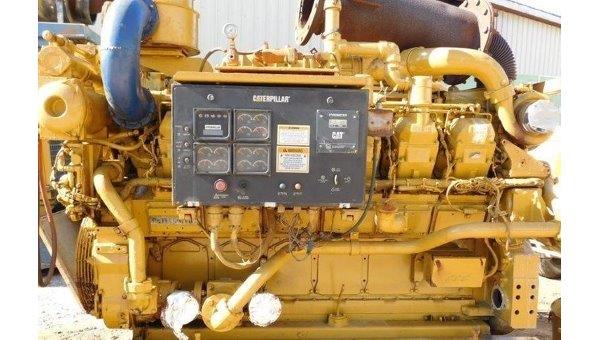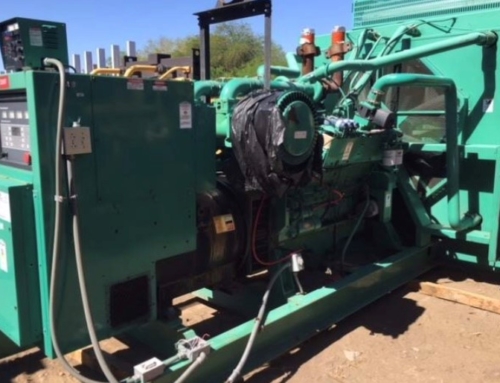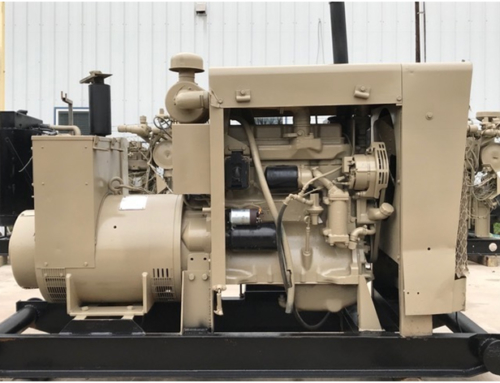This article gives data on the meaning of emissions and how to choose the emanation level an engine falls under. While choosing a generator set, a vital thought is an application for the accompanying reasons:
Crisis Generator Applications – Do not need to keep up any emissions necessities for the beneath occurrences:
- Boundless OPERATION FOR EMERGENCY POWER SUPPLY
- NON-EMERGENCY OPERATION OF UP TO 100 HOURS
Real Power Source – The generator conforms to emissions controls. All real engine producers distribute singular outflow outlines. These graphs mirror the EPA level the engine ensures for.
Table of Contents
Emissions
What are Emissions?
The fumes of a diesel engine contain by items from the ignition. These are the observations for ecological security, underneath emissions:
- Nitrogen Oxide (NOx) – Occurs naturally because of the bacterial process, organic development, rot, lightning, timberland flames and consuming of non-renewable energy sources. Dull non-poisonous gas (alluded to as snickering gas).
- Hydrocarbons (HC) – Organic concoction exacerbates that comprise altogether of carbon and hydrogen. They run from straightforward atoms, for example, methane to polymers, for example, polystyrene.
- Carbon Monoxide (CO) – Colorless, scentless, poisonous gas created from fragmented consuming of petroleum derivatives.
- Particulate Matter (PM) – The whole of all strong and fluid particles suspended noticeable all around.
Emissions History
Before July of 2006 directions for stationary diesel engines (fundamentally utilized for power age) were rather than controls for non-street diesel engines. There were no government emissions controls for stationary engines. Discharge controls were represented by state and nearby experts. These prerequisites were represented by hours of activity.
In July of 2006, the Environmental Protection Agency (EPA) settled plans to control emissions from stationary diesel engines. Starting January 1, 2007, the New Source Performance Standards (NSPS) blended discharge necessities for stationary diesel engines with existing EPA non-street directions.
The EPA built up two separate classes of “nonroad” applications, recorded underneath:
Versatile – Farm gear, development hardware, trailerized generator sets and other portable industrial engines utilized on transitory rough terrain applications.
Stationary – Any engine that is in use as a power source. Counting standby generator sets, nearby prime, and disseminated vitality power frameworks. Trailerized engines and generator sets are thought to be stationary when they are introduced at a solitary area for over a year.
EPA controls are separated into emissions Tiers. Therefore, every engine maker, (for example, Cummins, Caterpillar or Detroit) ensures the engine with the EPA. However, the confirmation (Tier) of the engine may not be the same between the two producers. To ascertain Emission Tier for a Cummins engine:
- Check generator measure in kW or Hp
- Match date of creation of the engine
- Check Tier (shading coded) generator set is related with
Directions for Standby and Emergency Generators
Responding Internal Combustion Engines (RICE)
The EPA characterizes RICE as engines that utilization cylinders that on the other hand move forward and backward to change overweight into turning movement. However, RICE engines are utilized as a part of assembling plants to create power. What’s more, engines are utilized as a part of the crises to create power for different applications.
The EPA controls RICE since regular ignition sources, all in all, can significantly affect air quality and general wellbeing. Therefore, the EPA manages all RICE stationary engines. So, prerequisites depend on the accompanying:
- New or existing engine
- Engine zone or significant power source
- Engine crisis standby power source
The EPA extended the number and kind of stationary RICE that must consent to government necessities, to include:
- National Emission Standard for Hazardous Air Pollutants (NESHAP) – For Reciprocating Internal Combustion Engines (RICE). 40 Code of Federal Regulations Part 63, Subpart ZZZZ. The RICE run the show.
- New Source Performance Standards (NSPS) – Standards of execution for stationary start engines. 40 CFR, Part 60, Subpart JJJJ. The start NSPS run the show.
- Guidelines of Performance for Stationary Compression Ignition Internal Combustion Engines. 40 CFR, Part 60, Subpart IIII. The pressure Ignition NSPS run the show.
RICE Rule Does Not Apply
The EPA has decided the RICE govern does not have any significant bearing to the accompanying applications:
1. Engine vehicles, or to non-street engines which are:
- Self-impelled (tractors or bulldozers)
- Impelled while performing outlined capacity (grass trimmers)
- Portable or transportable, including:
- Has wheels, slides, conveying handles, dolly, trailer or stage
- A portable non-street engine ends up stationary if in the same area for over a year, or for a yearly operating time of a season)
2. Existing Emergency Engines – Located at private, institutional, or business region sources, and not utilized for neighborhood unwavering quality. An engine must meet Subpart ZZZZ crisis engine operational necessities:
Meanwhile these are boundless USE FOR EMERGENCIES (E.G., POWER OUTAGE, FIRE, FLOOD).
- Crisis engines can work for 100 hours for every year for any blend of the accompanying:
- Support and testing
- Crisis request reaction (in circumstances when a power outage is impending or the unwavering quality facilitator has proclaimed an Energy Emergency Alert Level 2 as characterized in the North American Reliability Corporation (NERC), Reliability Standard
- Meanwhile, a deviation of voltage or frequency of five percent or more prominent beneath the standard voltage or frequency
- 50 Hours for each Year of the 100 hours for every year allotment can be brought into use:
- Non-crisis circumstances, if a monetary course of action has not been made
- Nearby unwavering quality as a piece of a budgetary game plan with another substance if particular criteria meeting existing RICE at zone wellsprings of Hazardous Air Pollutants (HAP) as it were
- Pinnacle shaving until May 3, 2014. Pinnacle shaving is a heap administration program
RICE Rule Applies
The EPA has decided the RICE manage applies to the accompanying applications:
Meanwhile, engines more noteworthy than 500 hp and utilized as a noteworthy wellspring of power including:
- Existing engines built before 12/19/2002
- New engines built on or after 12/19/2002
- Hence, remade engines, development started on or after 12/19/2002
Engines not exactly or equivalent to 500 hp and utilized as a noteworthy wellspring of power including:
- Existing engines developed before 6/12/2006
- New engines built on or after 6/12/2006
- Remade engines, development started on or after 6/12/2006
EPA Finalizes Rule
Meanwhile, in January 2013 NESHAP administer for reinforcement generators enabled them to work for up to 100 hours for each year without requiring the utilization of Ultra-Low Sulfur Diesel (ULSD) fuel. Three petitions were documented. In January 2015 EPA reactions to the petitions were:
- The planning necessity to use ULSD – EPA rejected contentions that ULSD is as of now adequately accessible to require its utilization quickly
- The planning and required data for revealing regarding crisis engines – EPA rejected demand to move the up the detailing, discovering it would be unduly difficult
- Therefore, criteria for the task in non-crisis circumstances – EPA rejected contentions that its criteria for permitting such activities were “excessively unclear and extensive”
Synopsis/Regulation Application
Synopsis
Starting 2007 EPA settled plans to fit outflow prerequisites for stationary diesel engines with existing EPA non-street directions. Therefore, all engines exist in isolation into Tiers. Arrangement for levels are classified by creation date and engine/generator estimate. January 2015 EPA finished 40 CFR 63, Subpart ZZZZ.
Control Application
Applying EPA RICE controls to the crisis generator application for every office can be a broad or moderately basic process contingent upon generator engine measure, date of engine creation, and use of a generator.
In the case underneath, the office is a medium size, however, needs a reinforcement power source that can give 100% operational ability amid power blackouts. Therefore, Engineering figurings demonstrate a 1500 Kw generator will meet operational requests. The creation of Cummins 1500 Kw generator, was in 2008 (Figure 1) is chosen from the stock.
Take after the means underneath to decide the pertinent controls:
Take after the means underneath to decide the pertinent controls:
- Decide whether RICE control applies.
RICE govern does not have any significant bearing in light of the fact that:
Therefore, we use our generator sets during a power blackout crisis (boundless use for these crises).
- Decide whether any state controls apply. As an example, Virginia Link is there.
Since, the engine for this application can work for a boundless measure of hours to supply crisis power and can work for up to 100 hours of non-crisis conditions.
Generator Used as Major Power Source
The RICE manage will apply if the use of the generator set recorded above was viewed as a “noteworthy wellspring of power”. Besides that, Cummins made this engine to meet Tier 2 EPA confirmation prerequisites.
But , in the event that a generator set is required to take after RICE applications, seems like the accompanying advances will help in keeping up generator emissions:
- Try to keep up generator set to make principles. Things, for example,
- So, engine benefit
- Therefore, cooling framework benefit
- Air framework benefit (to incorporate engine air supply and compartment supply)
- Fuel framework (counting fuel channel change and blame code observing)
- Use of ultra-low or low sulfur fills
- Finally, use of fumes after treatment frameworks





Leave A Comment